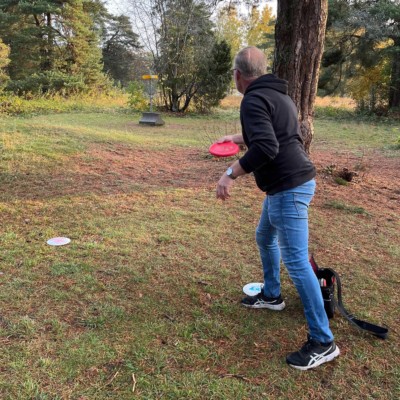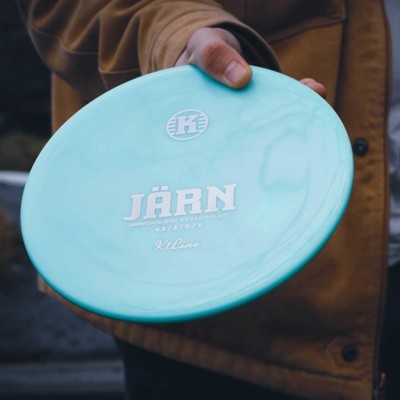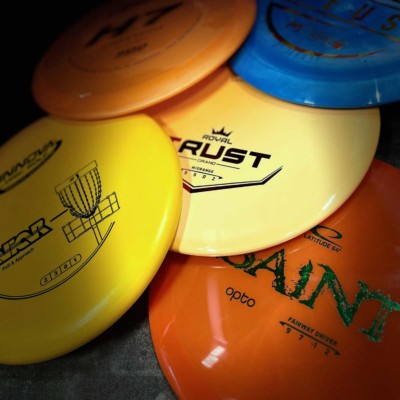About Discgolf (Frisbee golf)
Disc golf is one of the fastest growing sports in the world today.
The sport is designed for people of all ages regardless of gender and fitness level.
It is a fun and challenging exercise activity that does not cost too much.
Disc golf is played much like golf except that the players use a disc (frisbee) instead of a ball and clubs.
Another difference is that in disc golf the players do not finish in a hole in the ground but in a so-called golf basket with chains sometimes called a chain hole.
The sport was developed and shaped in the 1970s and the goal is to complete each hole in at least one throw.
Disc golf is easy to start, healthy, and inexpensive compared to many other sports.
It provides upper and lower body conditioning, aerobic exercise, and mental stimulation.
Concentration is enhanced by developing technique, throwing, and overcoming obstacles such as trees and bushes. e.g. trees and bushes.
The sport can be played by most people regardless of fitness level but it is recommended to start slowly to avoid injury.
Disc golf also shares the same joys and frustrations as golf, making the sport both fun and challenging.
Usually disc golf is free to play in public parks and takes about half the time to complete a round compared to traditional golf.
There are also pay courses and courses that offer players to pay a voluntary green fee.

Recording against a chain hole on a lovely autumn day
What do I need to start playing disc golf?
The only thing you need to play disc golf is a disc (Frisbee). That's it!

Disc golf disc or more commonly known as frisbee golf disc.
Which Discs should I start with?
Most disc manufacturers have a starter kit in their lineup.
A disc golf starter kit often consists of each of the three primary types of golf discs.
The three primary types of golf discs are putter/approach, midrange and a driver (fairway or distance).
With a starter kit, you have a good mix of Discs to get you on the course.
How is disc golf played?
A disc golf course is often made up of 9, 12 or 18 holes of varying lengths between about 60-300 meters.
A disc golf hole starts from a tee and ends at a target, which is normally an elevated metal basket with chains.
When a player moves forward on the course (fairway), the players must make the next shot from the place where the previous shot landed.
Often the furthest player always throws first to avoid injury and other players should stand behind the thrower.
On the course you will encounter a number of different obstacles such as trees, bushes, water and hilly terrain.
When the disc lands in the golf basket, the hole is complete.
Explanation of the different types of Discs
In disc golf there are a number of different types of Discs similar to the use of different clubs in golf.
You often talk about three different Discs basically, Putt & approach, Midrange and Driver but actually there are four
as drivers are often divided into two categories of Fairway Driver and Distance Driver.
Distance Driver
Used for drives and throws intended for 100+ meters and maximum length.
Distance drivers are Discs designed to go far with a low and pointed profile.
As these are difficult to control and throw, they are not recommended for beginners.
Fairway Driver
Sharper Discs for less air resistance used for long controlled shots between 75-125 meters.
A fairway driver is easier to control than a distance driver and therefore a good disc even for beginners.
Midrange
Is the most versatile disc of the different types of Discs.
The disc is used for throws between 50-100 meters and can also be used as a putter or approach disc.
If you as a beginner want to start with a disc, a midrange disc is the best choice.
Putt & Approach
Used for short controlled approaches and putts. They are blunt, which makes them grip-friendly and easy to control.
The putter is most often used for approaches to the basket under 20 meters but can also be used for throws between 20-80 meters.

Different types of Discs, Putter, midrange, hybrid and drivers
Flight characteristics, what the numbers on the disc mean
The flight characteristics of a golf disc are divided into four different parts which are often written as numbers on the disc.
The numbers are always written in the same order and are Speed, Glide, Turn and Fade.
- Speed
Specifies the speed of the disk.
Speed is specified in a range of 1 to 15.
- Glide/glid
Indicates the propensity of the disc to glide through the air.
Glide is given in a range of 1 to 7.
- Turn
Specifies how much the disc moves to the right immediately after the throw (to the left for left-handed backhanders)
Turn is specified in a range of 1 to -5.
- Fade/end
Specifies how much the disc will fade to the left at the end of the flight path (to the right for left-handed backhanders)
Fade is specified in a range of 0 to 5.
Over- or under-stable
Over- or under-stable explains whether the disc goes to the right or left for right-handed backhand throwers.
Add Turn + Fade, if the sum is below 0 the disc is under-stable.
If the sum is 0-1 it is a neutral disc and if the sum is above 1 the disc is over-stable.
Understable = Right, Neutral = Straight, Overstable = Left.
If you are left-handed, it is the other way around, also applies to a right-handed person throwing forehand.
As a beginner, you should have an understable disc with low weight.
